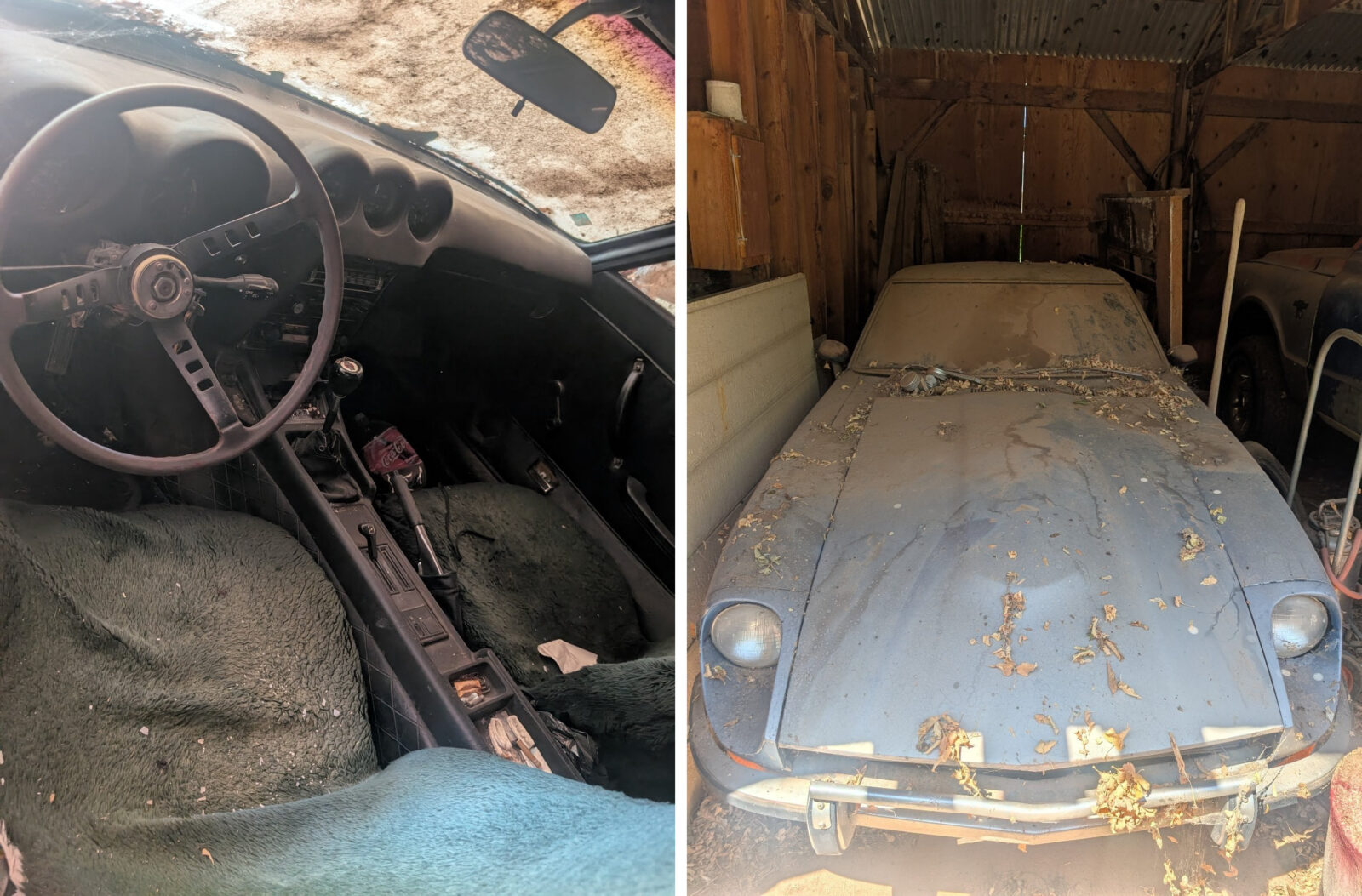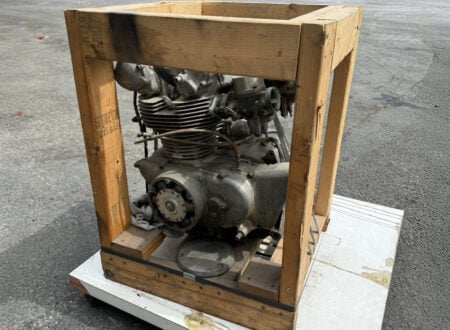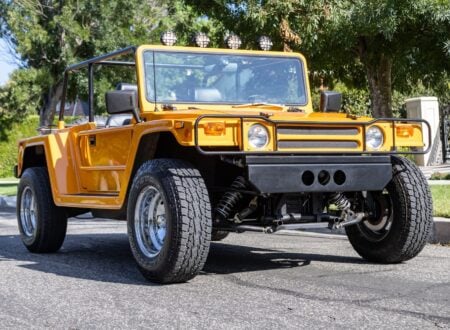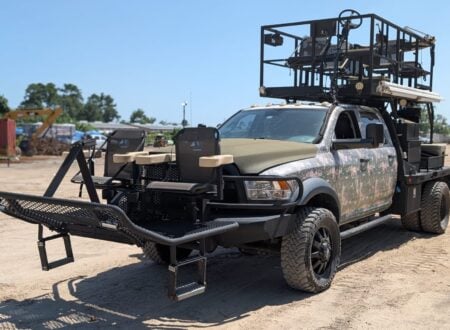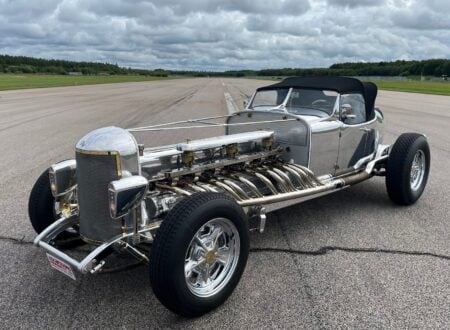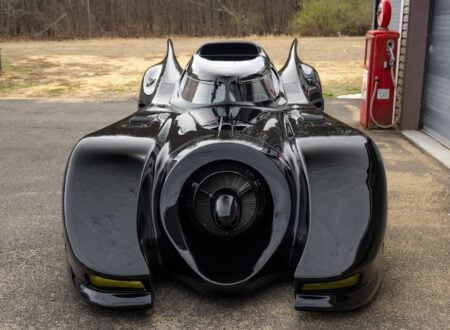This is an early Datsun 240Z that was built in the first year of production – 1969 (1970 model year). According to the seller it has just 7,000 miles from new (verified through ownership history), and it’s spent decades in a barn waiting to be rediscovered.
Early 240Zs like this are in high demand with collectors, and low mileage cars like this almost never come up for sale. This one is being offered right out of the barn in Panguitch, Utah on eBay with a Buy it Now price of $20,000 USD.
Fast Facts: A Datsun 240Z Barn Find
- The Datsun 240Z was introduced in late 1969 as a 1970 model year car. It was a major turning point for Japanese automakers in the US market – conceived under Yutaka Katayama, with design input from Yoshihiko Matsuo and Kumeo Tamura, it combined sleek styling reminiscent of European coupes with practical Japanese engineering and reliability.
- It was powered by the 2.4 liter L-series inline-six producing 151 bhp, sending power back through a 4-speed manual gearbox, and it had independent suspension all around. Front discs and rear drums provided braking, while its 0 to 60 mph time of under 9 seconds placed it well above many rivals.
- Launched at $3,526 in the US, the 240Z undercut European sports cars while outshining British roadsters in both performance and usability. Nissan sold over 160,000 in the US in its first four years, and racing success with Brock Racing Enterprises (BRE) gave it ample street cred. It changed American perceptions of Japanese cars, making them desirable rather than merely economical.
- The barn find example offered here was built in 1969 with VIN HLS30-10683 and has a claimed 7,000 miles on the clock. It retains its original L24 engine, 4-speed manual transmission, and paint, and is said to still run. Offered out of Panguitch, Utah, the eBay Buy It Now price is $20,000 USD.
History Speedrun: The Datsun 240Z
When the Datsun 240Z landed on the market in late 1969 it heralded the beginning of a new chapter, not only for Nissan, but for Japanese cars as a whole. Until then, Japan’s exports to the United States were largely small, economy-focused vehicles that appealed to budget-conscious buyers, but they lacked excitement.


Nissan executives, led by Yutaka Katayama (known in the U.S. as “Mr. K”), recognized that to build brand legitimacy and carve themselves out a broader customer base in the USA, the company needed a sports car that could rival European coupes on style and performance, while undercutting them on price, and maybe even beating them on reliability.
The 240Z was the result of Katayama’s concept. And it would come to be known as one of the most direct bullseyes in automotive history.
The 240Z’s development came directly out of Nissan’s earlier experience with the diminutive Fairlady roadsters, which had some sales success but couldn’t match the cachet of MGs or Triumphs. The Toyota 2000GT, launched in 1967, proved that Japan could build a world-class sports car – but its low production numbers and high price meant it had little chance of reshaping perceptions on a mass scale.
Nissan’s strategy with this new car was different. Working with designers Yoshihiko Matsuo and Kumeo Tamura, and with Katayama pushing for a car that would resonate with the US market, the 240Z was designed as a stylish fastback coupe with proportions that echoed the Jaguar E-Type and the Porsche 911, yet with Nissan’s pragmatic engineering underneath.
The formula was straightforward: create a car that looked exotic, performed like a European rival from MG, Triumph, or Alfa Romeo, but could be sold and serviced as easily as a family sedan.
Under its sweeping hood, the 240Z carried Nissan’s new L-series inline-six, a 2.4 liter SOHC unit producing 151 bhp and 146 lb ft of torque. Coupled to a 4-speed manual transmission and independent suspension at all four corners, the car offered sharp handling for its era – certainly better than the live-axle-on-leaf-springs still used by many of its competitors from the Continent.
Front disc brakes and rear drums provided solid stopping power, and the 240Z did the 0 to 60 mph sprint in under 9 seconds – plenty quick compared to contemporary MGBs and Porsche 914s.
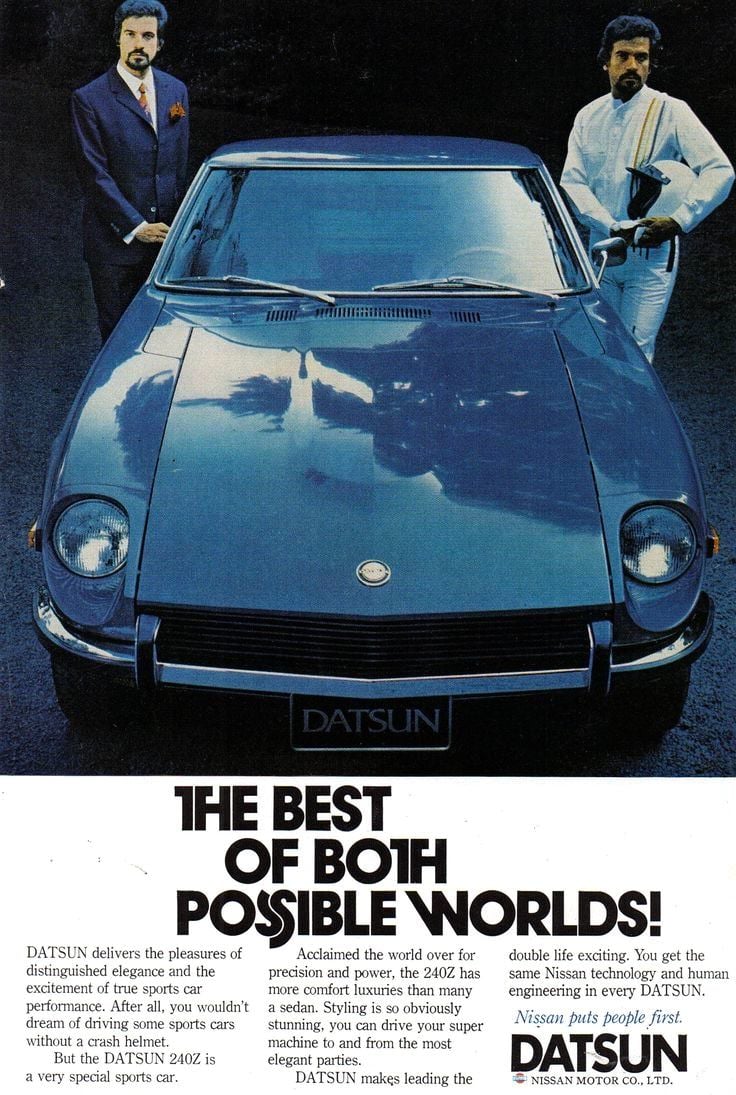

The Z had a usable hatchback layout, comfortable seating, and the sort of reliability Japanese manufacturers were becoming known for. Its $3,526 starting price in 1970 undercut rivals like the E-Type by a significant margin, while offering considerably more power and refinement than the average British roadster of the era.
The 240Z debuted in the US as a 1970 model and proved an immediate success, in fact, Nissan could barely keep up with demand, with long waiting lists forming at dealerships. Over 160,000 examples were sold in the US during the car’s first four years of production, transforming Datsun from a budget brand into a serious contender in the sports car market.
A major driver of credibility came through motorsport, largely thanks to the Brock Racing Enterprises (BRE) team, led by designer and racer Peter Brock who campaigned the 240Z in SCCA competition. Their successes, including winning national championships, firmly established the reputation of the 240Z as more than just a pretty face.
The 240Z would evolve into the 260Z and later the 280Z through the 1970s, with incremental changes in displacement and emissions compliance. But it was the original 240Z that made the biggest mark – it proved that Japanese manufacturers could build sports cars not as niche curiosities but as mainstream successes.
Perhaps the single largest impact that the Datsun 240Z had was the fact that it shifted consumer perceptions of Japanese cars in America – no longer were they seen only as economical and somewhat disposable – the 240Z gave them glamour, desirability, not to mention a solid foothold in the hotly contested world of racing.
The Barn Find Datsun 240Z Shown Here
According to the eBay listing, this car was built in 1969 as a 1970 model year car with VIN: HLS30-10683. It’s always important to verify these things of course, but if it all checks out this could be a good buy for a collector or early 240Z enthusiast, even more so when you note the claimed 7,000 miles on the odometer which is said to be verified through ownership history.
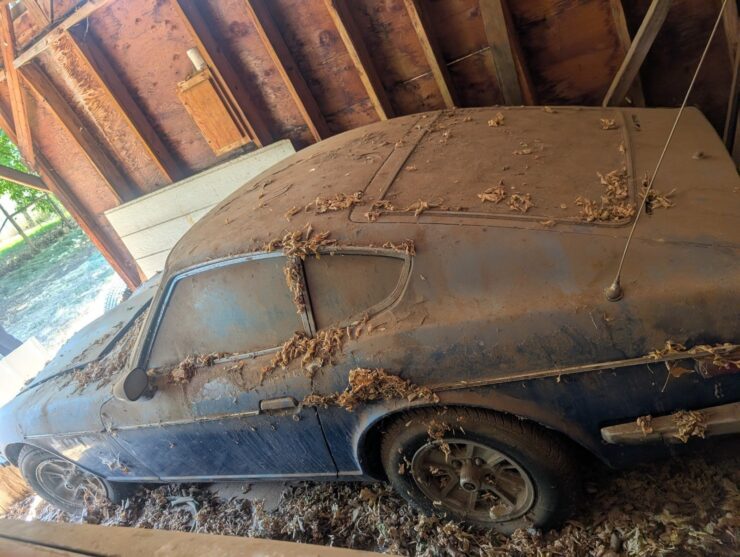

The listing notes that the car still has its original numbers-matching L24 engine, and amazingly it both turns over and runs – a testament to Nissan reliability. This car has the 4-speed manual transmission, the original paint and interior, and the seller says that the interior remains in excellent shape for its age.
The car is now being offered for sale on eBay out of Panguitch, Utah right out of the barn where it spent the past few decades tucked away from the world. The asking price is $20,000 USD and you can visit the listing here if you’d like to read more about it or place a bid.
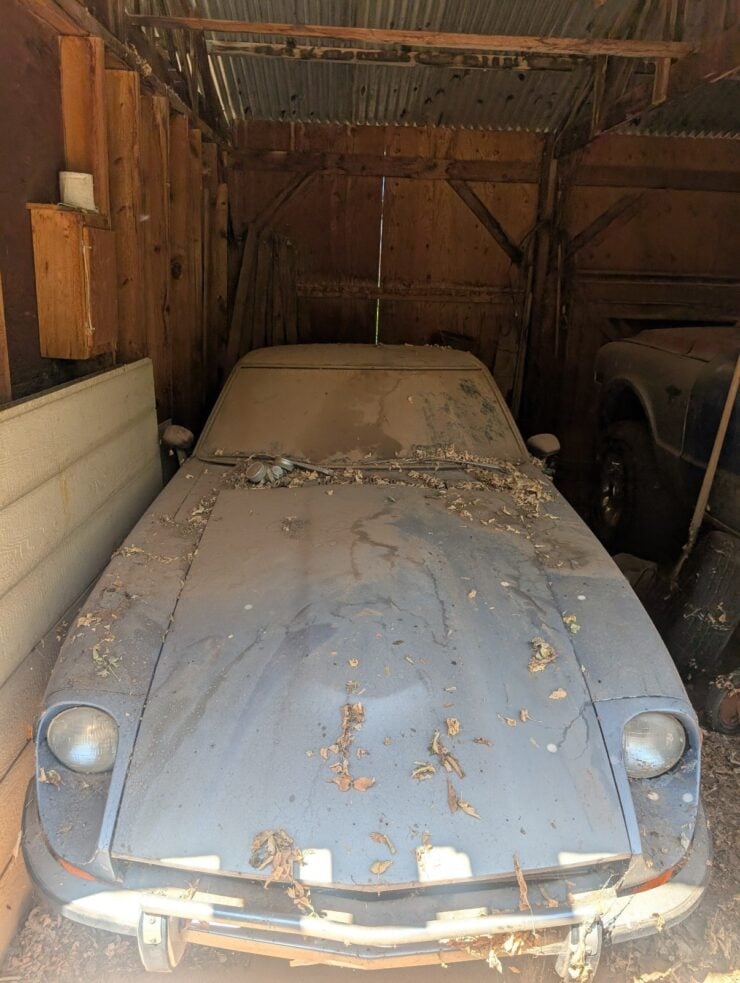
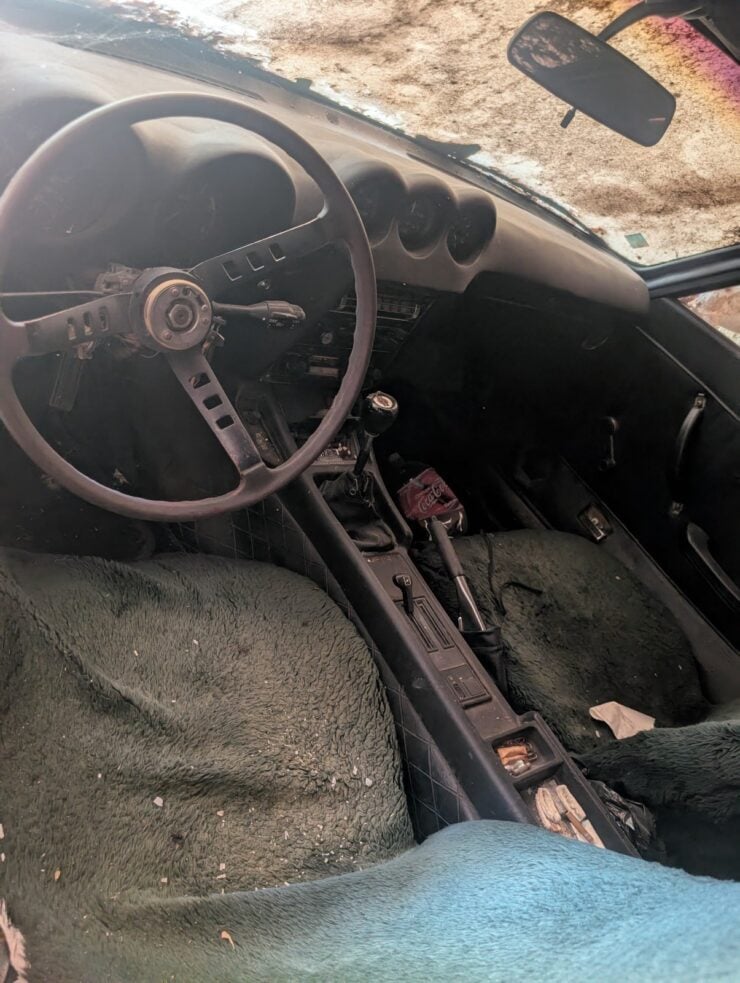
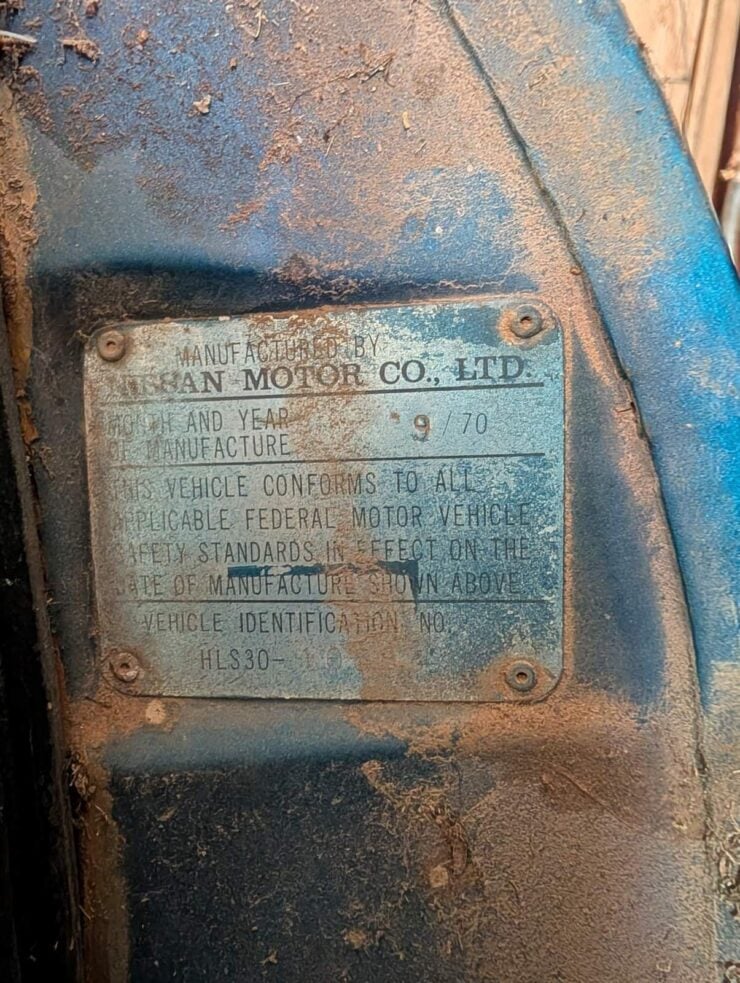
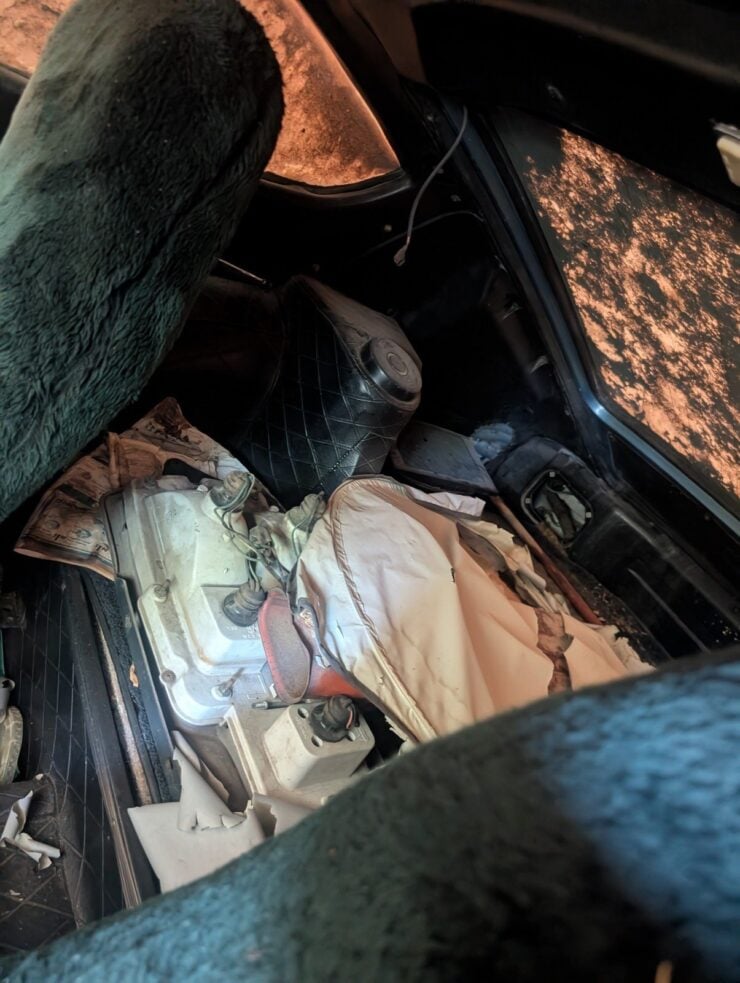
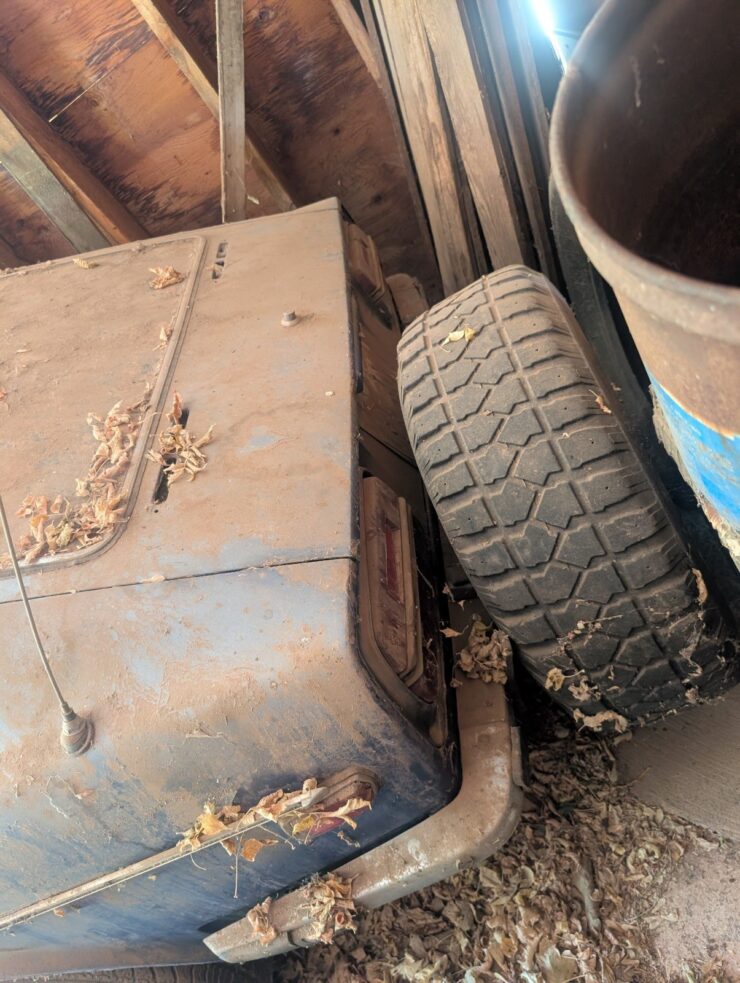
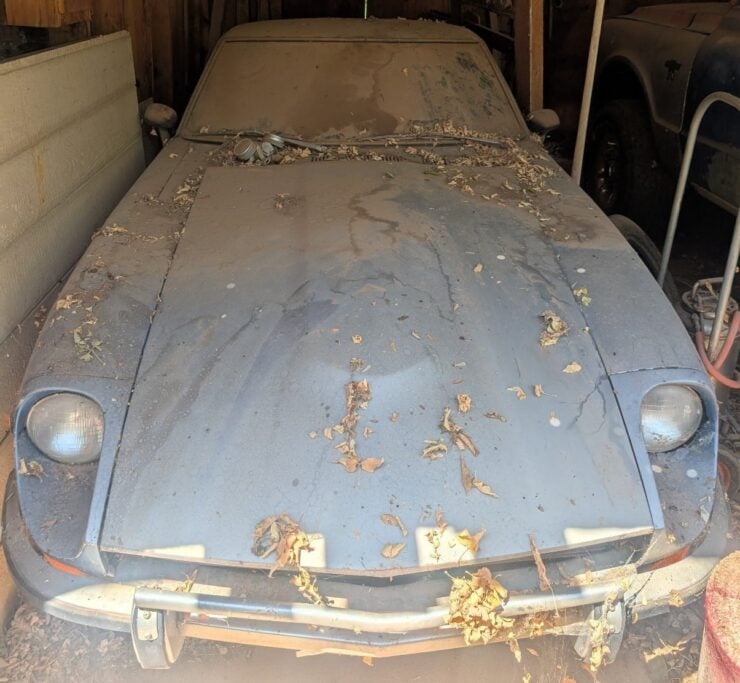
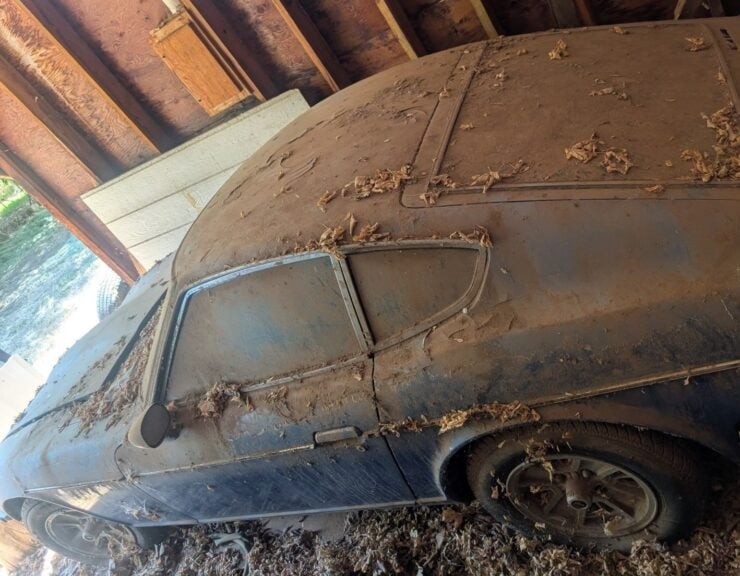
Images courtesy of Auction House 25

